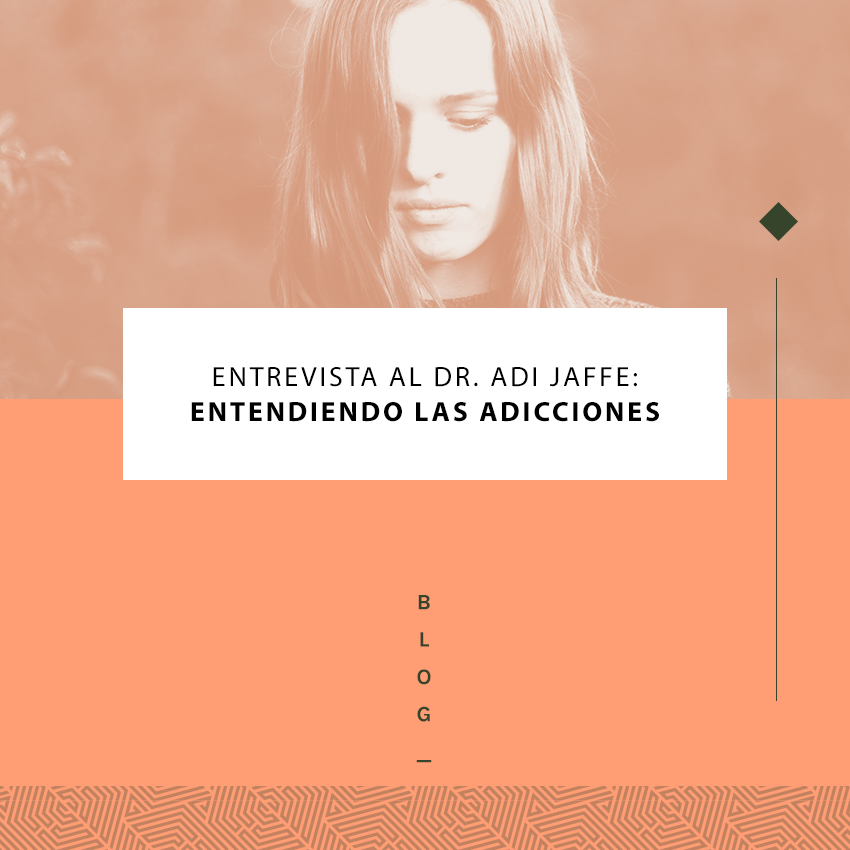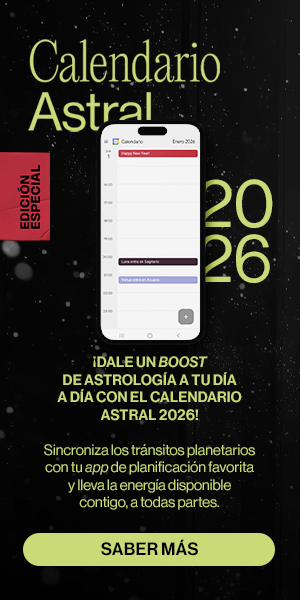
Entendiendo las Adicciones: Entrevista al Dr. Adi Jaffe
¿Te gustó este contenido? Haz clic en me gusta y consulta de nuevo, cuando quieras, en la sección de Mis Favoritos
Entendiendo las Adicciones
Aprovechando que estamos profundizando en el tema de la sombra y lo no reconocido, tuve la oportunidad de entrevistar al Dr. Adi Jaffe, experto en la superación de adicciones y autor del libro “The abstinence myth” o “El mito de la abstinencia”.
Si hay algo particular en el trabajo de Jaffe es que hace uso de su propia experiencia con la adicción para guiar a otros en el camino a superarlas con un nuevo enfoque: dejando la vergüenza, los juicios e, incluso, las reglas y el “deber ser” de lado. Puedes escuchar su Ted Talk sobre el tema acá como una introducción: clic aquí.
Les dejo nuestra conversación partiendo de su propia historia superando un patrón de adicción.
Al final de la entrevista puedes leer su versión original en inglés. Scroll down to read the original version in english.
P
Cuéntanos un poco de tu historia acerca de cómo superaste adicciones.
R
Fui un niño muy feliz con un buen hogar, pero a los 14 años descubrí el alcohol y le dio alivio a la ansiedad social que había estado escondiendo de todos (sin saberlo realmente). Durante los siguientes 11 años de mi vida, seguí buscando alivio de muchas formas, incluyendo la marihuana, el alcohol y una variedad de drogas más fuertes. Finalmente encontré las metanfetaminas, que realmente me hicieron desconectarme de mis inseguridades y sentirme más confiado y satisfecho. Seguí usando y vendiendo metanfetaminas durante unos cuatro años, hasta que fui arrestado en mi casa un sábado por la mañana por el equipo SWAT de Beverly Hills. Ese evento fue el comienzo de un largo viaje de recuperación para mí, que incluyó dos períodos diferentes de rehabilitación (fallé el primero por volver a las drogas), un año en la cárcel y un regreso a la escuela (porque no pude conseguir un trabajo).
Cuando regresé a la escuela me encontré increíblemente apasionado por estudiar la adicción y sus efectos en el cerebro, las razones por las cuales las personas se vuelven adictas en primer lugar y los mejores tratamientos disponibles. Ahora he hecho de este mi propósito y mi pasión en la vida: ayudar a rescatar a otros del infierno en el que me encontré y el dolor al que sometí a mi familia.
P
¿Cómo podemos reconocer nuestros disparadores, cómo podemos empezar a superarlos?
R
El primer paso es reconocer que nuestro comportamiento está causando problemas en nuestra vida. Una vez que hagamos esto, y podamos comenzar a identificar las áreas de nuestra vida que están siendo afectadas, podemos volvernos más sensibles a los factores que son importantes para impulsar el cambio de comportamiento. Los “triggers” o “desencadenantes” son internos (sentimientos, pensamientos, etc.) o externos (lugar específico, personas o cosas), y activan nuestro cerebro para recordar el comportamiento problemático o los resultados pasados de ese comportamiento. A medida que sentimos curiosidad acerca de las causas de nuestra bebida, consumo de drogas o comportamiento (para adicciones de comportamiento como el sexo, la comida o apostar), comenzamos a identificar cosas específicas en nuestro entorno que están relacionadas con ellos.
Algunos de los ejemplos comunes son los lugares en los que solíamos beber y consumir drogas, las personas con las que usábamos o tomábamos, y los recuerdos de experiencias vergonzosas o lastimeras del pasado. Si bien la mayoría de las personas tratan de evitar esos desencadenantes cuando intentan detener su comportamiento adictivo, las investigaciones de neurociencia sugieren que la exposición planificada (en persona o imaginaria) funciona mucho mejor para cambiar la relación con el desencadenante. Por lo tanto, si quieres cenar en tu restaurante favorito y no quieres beber, es mejor ir a visitar el lugar antes de tiempo para cambiar de asociación, que simplemente mantenerse alejado. Además, remplazar los disparadores del pasado por nuevos, o simplemente modificarlos para que ya no se ajusten a tu pasado puede ser increíblemente útil. Aquí hay un ejemplo: si hay una habitación en la casa en la que normalmente te dedicas a beber en exceso, redecórala, cámbiala completamente con pintura nueva, papel tapiz, muebles e imágenes. Esto puede cambiar la asociación del cerebro y reducir el consumo de alcohol en ese espacio.
P
¿Qué le dirías a una persona que no quiere ver a un mentor, terapeuta o especialista para entender y sobreponerse a la adicción?
R
Lo primero que diría es que EXACTAMENTE por esta razón creé nuestro programa en línea IGNTD Hero program, donde las personas pueden ayudarse a sí mismas, a su ritmo y sin tener que hablar con alguien. También es la razón por la que escribí mi libro: The Abstinence Myth. (En español: “El mito de la abstinencia”).
La vergüenza asociada con obtener ayuda para estos casos es real y evita que MUCHAS personas (alrededor del 90 % en realidad) obtengan la ayuda que necesitan. Durante años hemos culpado a quienes luchan contra adicciones, pero creo que ahora tenemos herramientas para simplificar el acceso a la ayuda.
P
¿Crees en los 12 pasos?
R
Creo que los 12 pasos pueden ser muy útiles para las personas que les gustan y quieren seguirlos. Sin embargo, son completamente inútiles (como lo es casi cualquier enfoque) cuando las personas no están interesadas y no se sienten conectadas. El valor de estas reuniones radica principalmente en ayudar a las personas que sienten vergüenza y desesperanza a vincularse con otras personas que tienen una mentalidad de apoyo.
P
¿Recomiendas cambiar los patrones de alimentación a lo largo de trabajar en adicciones?
R
Creo que intentar cambiar el status quo de varias maneras puede ser increíblemente útil para cualquier persona que tenga problemas con la alimentación. Mi esposa, Sophie Jaffe, trabaja mucho en torno a la alimentación intuitiva y recomienda que las personas intenten aprender a prestar atención a los deseos y antojos de su cuerpo, evitando correr con el piloto automático cuando se trata de comer. Esto significa adoptar prácticas de alimentación con atención plena y prácticas de meditación y atención adicionales para ayudar a sintonizar con nuestros propios deseos y sentimientos naturales, cosas que muchos de nosotros intentamos encubrir comiendo.
P
¿Cuánta adicción se interpone en el camino de las relaciones y la intimidad?
R
Creo que esta es una de las verdades ocultas de la mayoría de las luchas contra la adicción.La forma en que las personas buscan ayuda por primera vez está muy relacionada con el impacto que tiene su adicción en sus relaciones familiares, románticas o de trabajo. Lo que pasa con un hábito adictivo de cualquier tipo, es que a menudo se usa como mecanismo de defensa. Como digo en mi libro, el alcohol se usa para «reducir la intensidad o el efecto de algo desagradable» cuando el punto real de eso que es desagradable, en primer lugar, es decirnos que hay algo mal. Todas las relaciones verdaderamente íntimas requieren trabajo y atención, y al tener un atajo para “hacer frente” cuando las cosas se ponen difíciles, los «adictos» pueden encontrarse sin herramientas para conectarse verdaderamente con los demás.
P
¿Cómo podemos crear una cultura donde pedir ayuda no esté relacionado con la debilidad?
R
Debemos crear un lugar seguro para que las personas expresen verdaderamente lo que les está sucediendo, y la mejor manera es tener más conversaciones como estas que no apoyen la práctica de fingir que todo está bien. Mientras más personas cuenten su historia y compartan sus luchas y verdades, más seguro será para todos los demás.
P
¿Algo más que quieras agregar?
R
Solo quisiera agregar para las personas, que SÍ existe una salida de la adicción para todos. Ya sea a través de mi propio método, o con alguna de la gran cantidad de opciones disponibles, lo más importante es entender que la mayoría de las personas tienen éxito en vencer la adicción y que, si sigues buscando, ¡encontrarás la salida!
English version
This questions are very basic as in The latin community “addiction” still a tabu subject to talk about, mostly in Social Media. Also, my community might not know you, so I’m starting with simple but powerful questions that I know you will respond beautifully. I hope this is The first of a few times working together. Thank you
Q
Tell us a little bit about your story over coming addiction.
A
I was a well functioning happy kid from a good home when I found alcohol at 14 and the relief it gave me from the social anxiety I had been hiding from everyone (without truly knowing it). For the next 11 years of my life, I kept chasing relief in many forms including marijuana, alcohol, and all manner of harder drugs. Eventually I found methamphetamine, speed, which truly made me disconnect from my insecurities and feel more confident and content. I kept using, and selling, meth for about 4 years until I was arrested at my home on an early Saturday morning by the Beverly Hills SWAT team. That began a long journey of recovery for me, which included two different rehab stints (I failed the first one for using), a year in jail, and a return to school (because I couldn’t get a job). When I returned to school I found myself incredibly passionate about studying addiction and its effects on the brain, the reasons why people become addicted in the first place and the best available treatments. I have now made this my purpose and passion in life – helping rescue others from the hell I found myself in and the pain I put my family through.
Q
How can we recognize our triggers, how can we start to overcome them?
A
The first step, before overcoming triggers, is to acknowledge that our behavior is causing problems in our life. Once we do this, and we can begin identifying the areas of life that are being affected, we can become more sensitive to the factors that are important in driving the behavior. Triggers are essentially internal (feelings, thoughts, etc) or external (specific place, people or things) that activate our brain to remember the problematic behavior or past results of that behavior. As we become curious about what causes our drinking, using or acting out (for behavioral addictions like sex, food or gambling), we begin identifying specific things in the world that are related to them. Places we used to drink/use people we used with or acted out with, and memories of past shameful or hurtful experiences are some common examples. While most people try to avoid those triggers when they try to stop their addictive behavior, neuroscience research suggest planned exposure (in person or imagined) works much better to actually change the relationship to the trigger. So if you have a dinner at a favorite restaurant and you want to not drink – it’s better to go visit the location ahead of time to change the association than it is to simply stay away. Also, replacing past triggers with new ones or changing the old ones to no longer conform to their past can be incredibly helpful. Here’s an example – if there’s a room in the house where one typically engages in heavy drinking, completely redoing that room with new paint, wallpaper, furniture and pictures can actually change the brain’s association and lead to less drinking in that space.
Q
What would you say to a person who doesn’t want to see a coach, therapist or specialist to understand and over come addiction?
A
The first thing I would say is that this is EXACTLY why I created our online IGNTD Hero program where people get to help themselves at their pace and without having to talk to someone. It’s also why I wrote my book – The Abstinence Myth. The shame associated with getting help for these is real and keeps A LOT of people (about 90% actually) from getting the help they need. For years we’ve blamed those who struggle, but I believe we now have tools to make accessing help so much simpler.
Q
Do you believe in The 12 steps?
A
I believe that the 12-steps can be very useful for people who like them and want to follow them. However, they are completely useless (as is almost any approach) when people aren’t interested and don’t feel connected. The value of meetings lies primarily in helping people who feel shame and hopelessness to link up with others who are like minded supportive.
Q
Do you recommend changing eating patterns along working on The triggers?
A
I believe the trying to change the status quo in a number of ways can be incredibly helpful for anyone struggling with problematic eating. My wife, Sophie Jaffe, does a lot of work around intuitive eating and recommends that people try learning to pay attention to their body’s cravings and desires and avoid running on autopilot when it comes to eating. This means adopting mindful eating practices and additional mindfulness and meditation practices to help tune-in to your own natural urges and feelings, things that many of us try to cover up by eating.
Q
How much addiction gets in the way of relationships and intimacy?
A
I think this is one of the hidden truths of most addiction struggles. The way people first seek help is very often connected to the impact their addiction has on their relationships – family, romantic or work based. The thing about an addictive habit of any sort is that it is often used as coping. As I say in my book, the alcohol is used to «take the edge off» when the real point of that edge in the first place is to tell you that there is something wrong. All truly intimate relationships require work and attention, and by having a shortcut to coping when things get hard, «addicts» can often find themselves without tools to truly connect to others.
Q
How can we create a culture where asking for help is not related to weakness?
A
We must create a safe place for people to truly express what is happening for them and the best way is by having more conversations like this that do not support the practice of pretending like everything is OK. The more people come forward and admit to their struggles and truths, the safer it will be for everyone else.
Q
Anything else you want to add?
A
I would just want to add for people that there absolutely IS a way out for everyone from addiction. Whether it’s through my own method or a whole slew of other available options, the most important thing is to understand that most people succeed in beating addiction and that if you keep looking you WILL find your way out!






